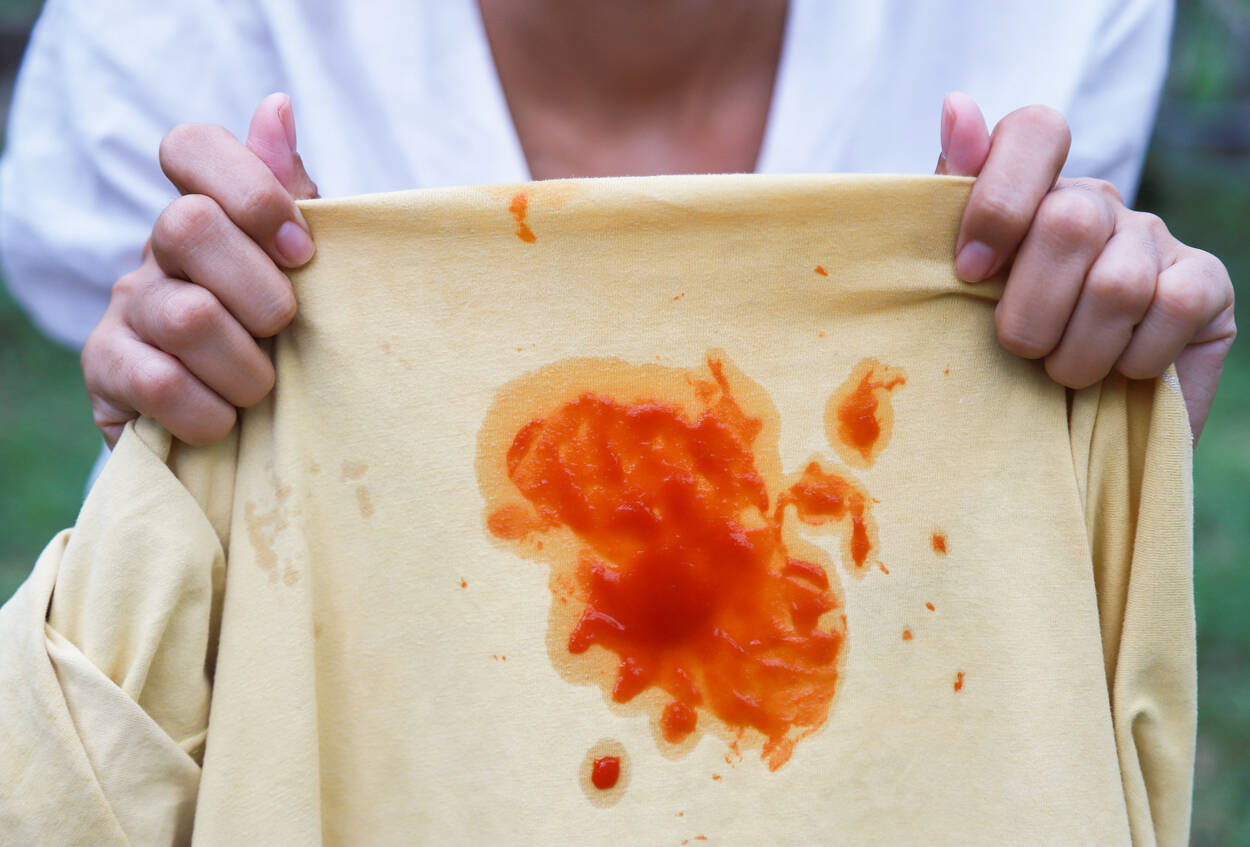Blood stains end up in clothes, underwear, and bed sheets, for various reasons. Accidents do happen, and this can lead to a few drops of blood in shirts and pants from nose bleeds, minor cuts and shaving nicks. It can also occur because of our jobs, ER nurses and Vet Techs know that blood stains everything it touches. The first thing to keep in mind when dealing with a blood stain in your clothes is that you need to move fast.
Quickly gather the supplies you’ll need. A cloth or rag you’re willing to dispose of, a bowl with room temperature water, hydrogen peroxide, and if available, a mild detergent. For the detergent you’ll want to use something designed specifically for stain removal. One example would be OxiClean stain remover.
Start with the rag, slightly damp with room temperature water. Tapping and blotting the stain gently but not scrubbing the stain which will smear the stain. Mix the mild detergent into the bowl of room temperature water and then soak the stain in it. No more than an hour if even. Lastly apply a small amount of hydrogen peroxide to the stain. There may be a bubble or foam action, this is just what hydrogen peroxide does when it meets blood. Hydrogen Peroxide is an oxidizer, that means it makes things lighter in the same way that bleach does but much less aggressively. For a darker color garment you may want to test a small spot first.
The finishing touch might be to wash with an enzyme detergent, like Tide Liquid Coldwater detergent. But it’s important to remember that we are talking about small stains of your own blood in shirts, shorts, underwear, and nurse scrubs.This article doesn’t cover a biohazard situation, properly disinfecting, or the risks of bloodborne pathogens. If you are dealing with pooled blood, blood in multiple areas, or blood soaking into house structures you need to call a professional.
A1 BioHazard’s professional technicians are certified and experienced in best practices for blood cleanup and biohazard remediation. They are trained in proper use of personal protective equipment, the risks and mitigation techniques for working around blood and other potentially infectious materials. If you have any questions call A1 BioHazard immediately.

